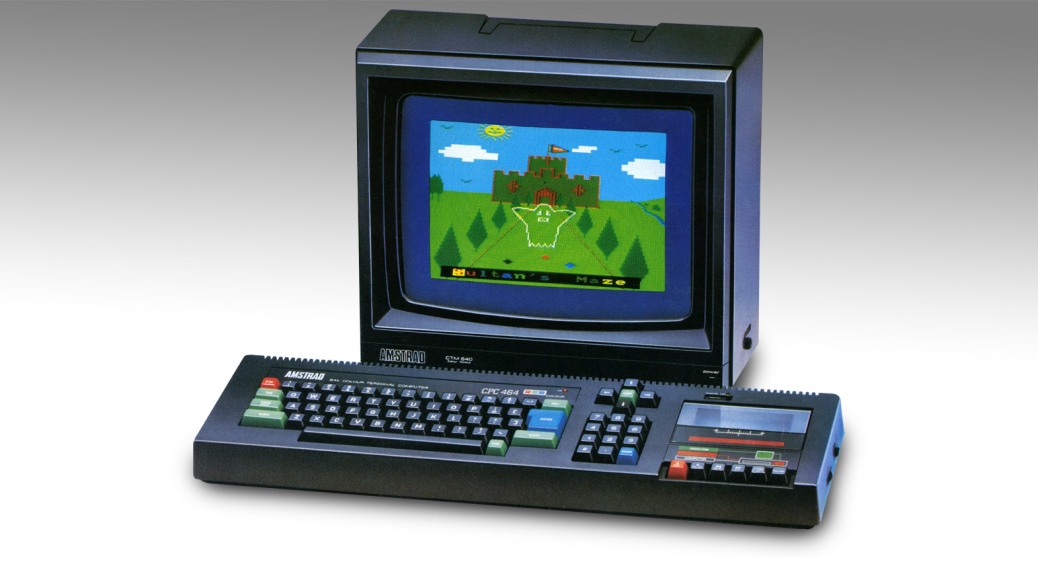The Amstrad Colour Personal Computer (CPC) is a family of 8-bit home computers that were designed and manufactured by British company Amstrad (the infamous one led by Alan Sugar), and marketed as competition to the Commodore 64 and ZX Spectrum from 1984 onward.
The CPC came in a number of configurations; the base level initial release being the 64K “CPC464“, which had a professional-looking fully-moving keyboard and a built in cassette deck for loading software. The later “CPC6128” machine had 128K of RAM and a built-in floppy disk drive.
All CPC models were based on the Zilog Z80A CPU, clocked at 4MHz, and had built-in display outputs that could handle three graphics modes, making the machine particularly suited to running video games. The first CPC computers supported a colour palette of 27 colours, with later ‘Plus’ models increasing this to 4096 colours. Base memory could be expanded up to 512KB using third-party add-ons, although hardware enthusiasts managed to increase this to 4096KB by using experimental methods. Since the Z80 CPU could only access 64KB of RAM directly, bank switching had to be used to access more than that. Sound was handled by the built-in AY-3-8912 chip; the same audio processor as found in the Atari ST, ZX Spectrum 128/+2/+3, Oric-1, MSX, and many other home computer and video game systems.
The Amstrad CPC family sold over three million units in the six year lifetime that it was being manufactured, and the machine was particularly popular in mainland Europe (France and Spain adopting it the most), while also being reasonably popular in Britain. Since Amstrad did not have distribution channels in Germany, Austria or Switzerland it entered into a partnership with a German company called Schneider Rundfunkwerke AG which sold the CPC under its own name.
In an attempt to prolong the CPC‘s lifespan Amstrad repackaged the later ‘Plus’ versions of the CPC hardware into a cartridge-based console called the GX4000. While the GX4000 console was reasonably capable it wasn’t a success. Amstrad discontinued manufacture of the CPC range in 1990, but it’s fair to say that the machine has remained popular with gamers and tech enthusiasts ever since.

Many classic video games originated on the CPC, mostly because it was viewed by many coders as being an easy machine to develop on (having a fully-working keyboard definitely contributed to that, as did having 128K of RAM and a built-in floppy disk drive). The Amstrad also plays host to a wide variety of great conversions from other home systems and has a distinctive look and feel when it comes to graphic display modes; it’s relatively easy to recognise an Amstrad game due to its use of pixels and colours. In the right hands, the Amstrad CPC was more than capable of producing great games. The system even had its own video game mascot in the form of ‘Roland‘, although it wouldn’t be unfair to say that many Roland games were not very good. Some were, but many weren’t.
This week I’m going to be focusing squarely on games made for the Amstrad CPC. Some being classics, while others: not so much.
Here are links to what was published:
Get Dexter
Get Dexter 2
Chase HQ
Sorcery Plus
Spindizzy
Stunt Car Racer
Castle Master
Castle Master II: The Crypt
Gryzor
Turrican
Donkey Kong
Dragontorc
SimCity
Amaurote
Roland on the Ropes
Nebulus
Park Patrol
Rainbow Islands
Enjoy!
The King of Grabs
More: Amstrad CPC on Wikipedia

